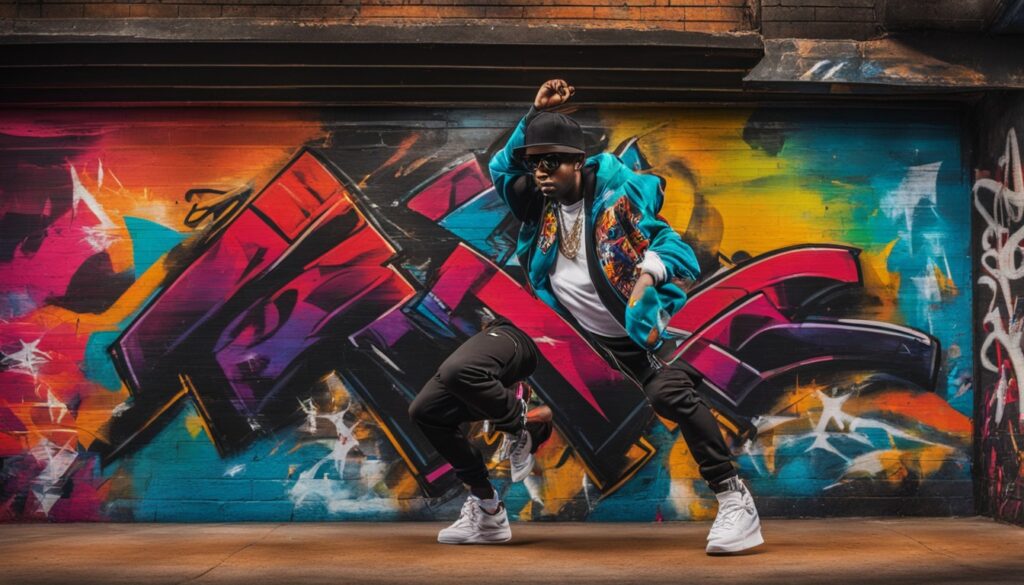Hip-hop fans know Trippie Redd delivers raw emotion through his music. His track “This Ain’t That” stands out in his discography. It features Lil Mosey and captures their unique styles.
Released with hard-hitting beats and catchy hooks, this song quickly gained popularity. It blends street-inspired artistry with modern hip-hop energy. Listeners connect with its authentic vibe and emotional depth.
We’ll explore the lyrics, themes, and artistic elements behind this powerful track. Discover how Trippie Redd and his feat artist create something special. This analysis reveals why it resonates like a love letter to hip-hop culture.
Key Takeaways
- Trippie Redd’s “This Ain’t That” showcases his distinctive style and collaboration with Lil Mosey
- The song combines hard-hitting beats with emotionally raw lyrics
- It has gained significant popularity within modern hip-hop circles
- The track represents Trippie Redd’s street-inspired artistic approach
- Listeners connect with its authentic energy and catchy musical elements
- The collaboration creates a unique blend of both artists’ musical signatures
- This analysis will explore the deeper meaning behind the song’s creation
Introduction to “This Ain’t That”
Hip-hop enthusiasts quickly recognize the powerful collaboration between two distinct artists. Trippie Redd and Lil Mosey join forces on this hard-hitting track. Their styles blend seamlessly to create an authentic street narrative.
Released as part of a larger project, the song carries significant weight in both artists’ careers. It showcases growth while staying true to their roots. Fans appreciate how it fits within their evolving musical journeys.
The production features energetic drums and a captivating beat that drives the entire song. This musical foundation supports the raw lyrical content perfectly. Listeners immediately feel the intense vibe from the opening notes.
Central to the track is the repetitive chorus emphasizing discernment between real and fake. The phrase “this ain’t that for real” becomes a powerful mantra throughout. It challenges listeners to recognize genuine authenticity versus empty talkin.
Lyrical content explores themes of credibility and street wisdom. Violent imagery like bullets and confrontational language appears alongside material references. These elements combine to create a compelling narrative about survival and success.
Lil Mosey‘s contribution adds another layer to the collaborative effort. His verse complements the main artist’s delivery while maintaining his unique flow. Together they create a dynamic exchange that elevates the entire piece.
Fan reception has been overwhelmingly positive since release. Streaming numbers reflect its impact within hip-hop communities. The song continues to resonate with audiences seeking authentic musical expressions.
In the following section, we’ll break down specific lyrical themes and interpretations. Prepare to explore deeper meanings behind the words and their cultural significance.
Breaking Down the Lyrics of This Ain’t That by Trippie Redd
Digging into the verses uncovers multiple layers of meaning. The collaboration between these artists creates a powerful narrative about street life and success.
Authenticity and Street Credibility
Central to the track is the theme of genuine behavior versus empty words. Lines like “Niggas be talkin’ shit, but they ain’t with that shit for real” emphasize this contrast.
The repeated phrase “this ain’t that for real” serves as a powerful mantra. It calls out false behavior while asserting real credibility.
Affiliation with “Big 14” and crew loyalty reinforces this authenticity theme. The artists position themselves as genuine in a culture that values realness above all.
Violence and Retribution
The song doesn’t shy away from harsh realities of street justice. Violent imagery appears throughout with lines like “Fuck nigga talkin’ shit, then he gon’ get his ass killed”.
Weapon references including choppers, Glocks, and FN rifles paint a vivid picture. These elements show the consequences of disrespect in this environment.
“Shoot him with this chopper, make his body dance” illustrates the retaliatory mindset. This reflects hip-hop’s tradition of addressing conflict directly through lyrics.
Materialism and Success
Wealth and status symbols appear alongside the gritty themes. “I got rings, I got rings, bitch, not Melo” showcases material success.
Lil Mosey’s verse continues this theme with “Know my riches ’cause these bitch look how it’s flexin'”. The luxury extends to family with plans for “a new crib for my mama”.
High-end cars like the Wraith represent the rewards of their journey. This blend of street wisdom and material success resonates throughout modern hip-hop.
These lyrical themes set the stage for examining how both artists deliver their messages. The next section explores their unique artistic approaches.
Artistry and Collaboration in the Track
Musical chemistry shines through when artists complement each other perfectly. This collaboration demonstrates how different styles can merge into something greater. Both performers bring their signature energy to create a memorable experience.
Trippie Redd’s Delivery and Flow
His vocal performance grabs attention immediately. The opening line “Uh, better listen closely, ayy” sets an intense tone. This aggressive delivery warns listeners about the raw content ahead.
Flow switches between rapid-fire lines and deliberate phrasing. This dynamic rhythm keeps the energy high throughout. The chant-like chorus reinforces the song’s central message powerfully.
Ad-libs like “yeah” and “uh” add character to the performance. Vocal inflections emphasize key points with attitude. The disdain in “you’s a bitch” makes the insult hit harder.
“Shoot a pussy nigga acting nosy, yeah…”
Metaphorical language adds depth to the street narrative. Calling himself “a fucking walking lick” shows confidence in his earning power. Every line carries weight through careful delivery choices.
Lil Mosey’s Feature and Contribution
His verse introduces a melodic contrast to the main artist’s intensity. The flow feels smoother while maintaining street credibility. Lines like “I’m with 14, we gon’ float through smokin’ OG” create vivid imagery.
Content complements the track’s themes perfectly. References to wealth and violence appear throughout his contribution. “Bullets, they hot as hell” continues the aggressive narrative from earlier verses.
Collaboration pride shines through in “Big bro, I did it again”. This shows respect for the partnership and shared success. His storytelling about loyalty adds another layer to the song’s message.
“This bitch loud, it’s some gas, got me choking…”
Production elements support both performances beautifully. The mention of “DJ on the beat, so it’s a banger” acknowledges the musical foundation. Hard-hitting drums and energetic beats drive the entire collaboration forward.
This artistic synergy creates a cohesive yet multi-layered hip-hop experience. Both artists play off each other’s strengths throughout the track. Their combined effort results in something greater than individual contributions.
Such powerful execution ensures the song’s lasting impact on listeners. The next section explores how this collaboration continues to resonate with audiences.
The Lasting Impact of “This Ain’t That”
Beyond its initial release, the track continues to resonate across hip-hop communities. Its hard-hitting energy and themes of authenticity secure a permanent spot in playlists. Fans celebrate it as a standout piece within the artist’s discography.
Memorable lines like the repetitive hook became instant favorites. Social media trends and live performances keep its spirit alive. This collaboration strengthened bonds between the featured artists, hinting at future projects.
Cultural conversations around street credibility and success find a voice here. Though specific chart data isn’t highlighted, streaming numbers reflect its enduring appeal. The blend of aggressive delivery and catchy drums makes it unforgettable.
Revisit the song with deeper appreciation for its layers. Discover how raw emotion and artistry merge into a powerful love letter to hip-hop. Explore more on Trippie Redd’s discography for similar gems.
Ultimately, it stands as a testament to genuine collaboration and musical innovation.
FAQ
What is the main message of "This Ain’t That"?
The song emphasizes realness and street credibility, calling out those who pretend to be something they’re not. It’s about staying true to your roots and not tolerating fake behavior.
How does Lil Mosey contribute to the track?
Lil Mosey adds a dynamic verse that complements Trippie Redd’s energy, bringing his own style and reinforcing the themes of authenticity and success in the music industry.
What are some recurring themes in the lyrics?
Key themes include staying genuine, addressing disloyalty, and showcasing material success. The lyrics also touch on consequences for those who cross boundaries or act dishonestly.
Why is "This Ain’t That" considered impactful in hip-hop?
The track resonates for its raw honesty and bold delivery, capturing the essence of modern rap while highlighting Trippie Redd’s unique artistry and collaborative strength.


